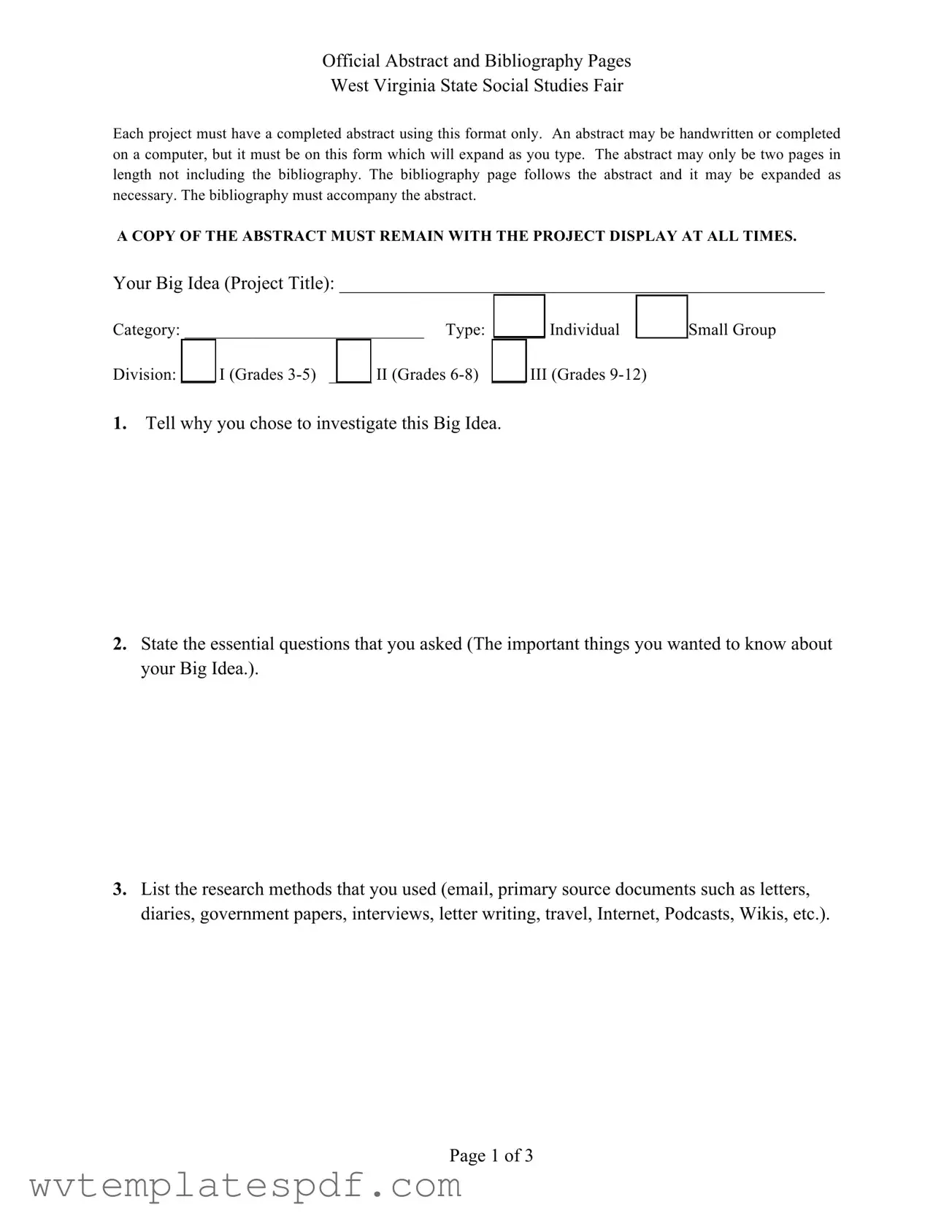Filling out the West Virginia Abstract Social Studies Fair form can be a straightforward process, but many people make common mistakes that can hinder their project. One frequent error is failing to adhere to the specified format. The form is designed to expand as you type, yet some individuals ignore this feature and submit a document that does not fit the required structure. This can lead to confusion and may detract from the overall presentation of the project.
Another mistake involves the length of the abstract. Participants often overlook the two-page limit, excluding the bibliography. Submitting an abstract that exceeds this length can result in penalties or disqualification. It’s essential to be concise and focused, ensuring that all required information fits within the given space.
Many participants also neglect to include a complete bibliography. The bibliography must accompany the abstract and should follow the correct format, including details like the author, title, place of publication, publisher, and publication date. Failing to include this crucial component can undermine the credibility of the research.
Moreover, some individuals do not provide a clear project title or Big Idea. This title should encapsulate the essence of the project, making it easier for judges and viewers to understand the focus of the research. A vague or generic title can lead to misunderstandings about the project's purpose.
Inadequate research methods are another common pitfall. Participants often list vague methods without specifying how they gathered their information. It’s important to detail the various research methods used, such as interviews, primary sources, or online databases. This clarity helps judges assess the depth of the research conducted.
Additionally, some fail to validate their sources of information. It’s crucial to explain how sources were verified to ensure reliability. Without this validation, the project may lack credibility, which could impact the overall evaluation.
Another frequent mistake is not clearly stating conclusions. Participants sometimes present findings without summarizing their significance. A well-articulated conclusion helps to reinforce the project’s main points and demonstrates critical thinking.
Lastly, suggesting improvements or future predictions is often overlooked. Participants should include a section on how the project could be enhanced or what future implications may arise from their findings. This not only shows forward-thinking but also engages the audience with the potential impact of the research.
